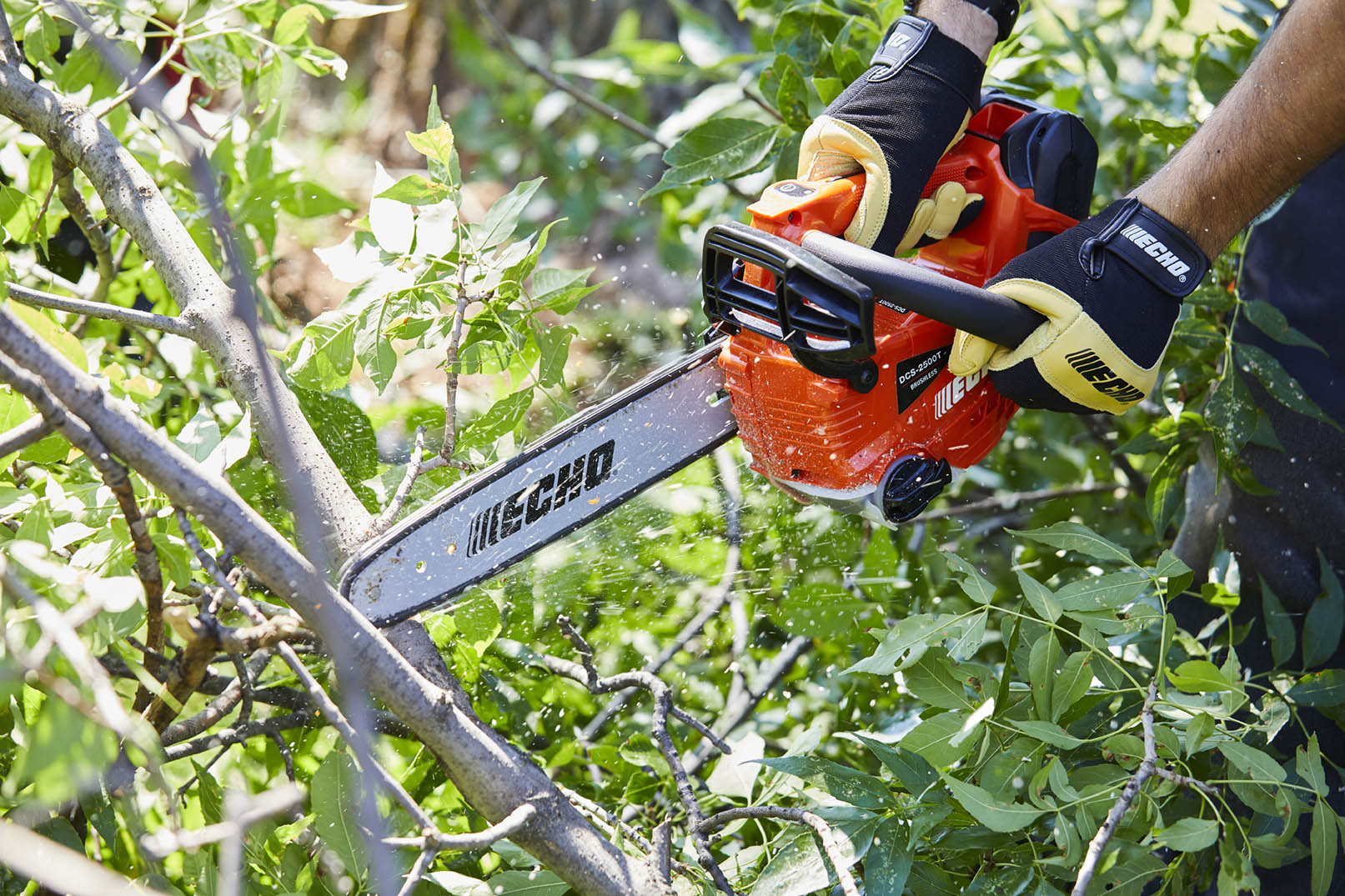| | A Complete Spring Yard Cleanup Checklist Preparing the lawn, shrub upkeep, gardens, and more | | | Spring is right around the corner, and there will be lots to do—trimming bushes and branches, prepping gardens, cutting down trees, and, of course, getting your lawn ready for the growing season. We’re excited to get going! Let’s go through the checklist of yard jobs for early spring! |
|  | | This year, make sure you have the right yard tools to get the job done, too, or whether you need any replacement gear. We’ve added on suggested tools and expert gear tips, too, courtesy of our friends at ECHO. How to Prepare Your Lawn Your lawn is where the family will enjoy a lot of quality time. Think of it as your private sanctuary. Being able to feel that lush, green grass under your feet in the summer starts out with feeding and seeding in fall or spring (depending on your location) and then goes on to include staying ahead of the weeds and removing dead grass and yard waste on an ongoing basis. Mowing When it comes to mowing, there are a few things to consider. Mow your grass regularly but don’t cut it too short. Never take off more than one-third at a time. The preferred height for lawns depends on factors such as type of grass, time of year, and drought conditions, but general recommendations range from 1½ to 2½ inches for warm-season grasses to 2½ to 3½ inches for cool-season ones. Mow grass when it is dry and don’t bag your clippings, as they return needed nutrients to the soil. Also, make sure that your blade is sharp. Equipment to use: If you need a new or replacement mower, consider one of the new battery-operated models, which have quite a few advantages. These can cut for more than an hour on one charge and are suitable for up to a third of an acre. Multiple battery ports will extend the amount of mowing that can be done on a single start. See this battery-operated mower from ECHO.
|  | | Hard-to-Reach Areas Don’t forget about those spots that your mower can’t reach. A good rule of thumb is to clean up around fence lines, garden beds, patios, and children’s play equipment when you mow. This will prevent weeds and grass from growing out of control and keep your yard looking sharp. Equipment to use: A string trimmer will get you to these hard-to-reach areas, and a battery-powered version will make the job that much easier. When using a string trimmer, always remember to remove any clippings or dirt from it beforehand and as you go along (once it’s cooled); wear sneakers or closed-toe shoes, long pants, and eye protection; practice good posture; hold your trimmer parallel to and a few inches off the ground; and use an even, side-to-side motion. Whether you’re a homeowner or a professional, having a string trimmer in the equipment arsenal is a must. |  | | Tree and Bush Upkeep Pruning Trees Did winter weather or a significant windstorm wreak havoc on the branches of your property’s trees? Are there others that you have been looking to take down due to safety or overgrowth concerns? The best time for pruning trees runs from late winter to early spring. Doing so in the spring enables fresh wounds to seal as new growth emerges. Another benefit to pruning during the dormant season is that cutting decisions are made easier by the fact that leaves are not blocking the branch structure. Pruning should begin when trees are young; this will reduce the amount of attention needed by the tree as it grows. Establish a dominant leader early in a tree’s life and remove any branches that cross or rub it, a condition that can lead to damaged limbs and areas of disease. Dead or diseased branches should be removed immediately to prevent further damage by pests or disease. While pruning to maintain health is preferred, there are instances when a tree needs to be taken down due to disease, proximity to power lines, or danger to people or property. Equipment to use: Some jobs may require only hand tools, but others are best suited for the use of a chainsaw. These tools include rear-handled models with a larger bar and chain—which are best for taking down trees or cutting fallen ones into firewood—and smaller, top-handled versions that are preferable for limbing or work higher up in the canopy. |  | | Battery-powered chainsaws provide plenty of power and cut time—from 60 to 200 cuts per charge, depending on battery size and type of chainsaw. Always use safety glasses and cut away from your body. Never use chainsaws to reach above your shoulders, and do not attempt to prune near electrical and utility wires. For big jobs, contact an arborist or tree service in your area for a consultation. |  | | Bushes and Hedges When your bushes or hedges need a trim, it’s imperative to do so at the right time. Deciduous shrubs that do not produce flowers should be trimmed and sculpted in late winter and early spring before seasonal growth begins. For bushes that bloom during the growing season, it’s necessary to know when the flowers emerge, so some research may be in order. Spring-blooming shrubs should be pruned immediately after flowering because growth after flowering is where blooms will appear the following spring. Summer-flowering shrubs should be pruned in late winter and spring before new growth begins. Equipment to use: One way to ensure a consistent look is to use a hedge trimmer, which is fast and efficient and allows for uniform cutting. |  | | Gardens and More Jobs Spring is the time for tilling new garden beds before putting seeds into the ground. While not always needed, tilling can be necessary, especially if you are starting a new area. Before tilling, remember to wait until the soil has dried from winter. It will be ready when it does not stick to your shovel and crumbles when squeezed.
Border edging can be done in the spring for walkways and patios to prevent growth from creeping in. Want to redefine your garden beds or mulched areas for crisp and defined lines? There’s a tool for that, too!
Equipment to use: For garden use as well as trimming and weed-whacking, consider the versatility of a battery-powered multi-tool system. These can run more than a dozen attachments—such as a string trimmer, brush cutter, edger, bed redefiner, paddle broom, pole pruner, and tiller/cultivator, not to mention multiple hedge trimmer options—all on the same battery. Useful to both homeowners and professionals, they’re like a Swiss army knife for yard care. |  | | Don’t Forget to Clean Up There will undoubtedly be leftover leaves, pinecones, and small debris from the winter scattered around your property. Make sure to remove this detritus early so that it does not affect grass growth. Your driveway and walkways will also need some continual TLC to deal with leftover winter sand and post-mowing grass clippings. Need to clean up by the street or sidewalk in front of your house? How about all of those leaves that drop in in the fall? Well, there’s one tool that will aid in all of these jobs. Equipment to use: When compared to hand raking, using a handheld blower, or paddle attachment to remove heavy material from grass areas, will always be faster when it comes to early spring cleanup. This tool can also be used throughout the year, and you’ll be surprised at the power provided by battery-driven models. |  | | The Benefits of Batteries This might be the year to transition some old equipment. Stores often have limited inventory, especially this year, so you might want to get a jump on this. We’re a big fan of battery power. For generations, gas power was the only choice—but product development in battery-operated tools has come a long way during the past decade. There are many benefits to battery-powered equipment: Ease of operation. No need for tune-ups or annual maintenance. No mixing of gas and oil. No annoyingly loud racket all the time. All that you need to do is simply put in a charged battery and get to work. Off-season storage for battery-powered equipment is also easier because there is no gas or oil that needs to be accounted for. |  | | The quiet hum of battery-powered equipment allows you to work when convenient for you, and worrying about the neighbors becomes a thing of the past. The Bottom Line The quiet hum of battery-powered equipment allows you to work when convenient for you, and worrying about the neighbors becomes a thing of the past. | | | | | You received this email because you signed for updates from The Old Farmer's Almanac.
If you do not wish to receive our regular e-mail newsletter in the future,
please click here to manage preferences.
*Please do not reply to this e-mail*
© 2022 Yankee Publishing Inc. An Employee-Owned Company
1121 Main Street | P.O. Box 520 | Dublin, NH 03444
Contact Us
View web version | | | | |













No comments:
Post a Comment